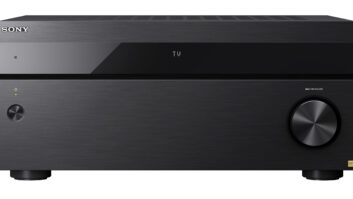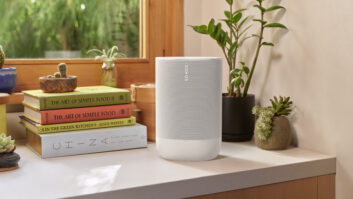Back right before the end of the last century, I had the privilege of starting a magazine called Surround Professional with my boss, Martin Porter, and Tomlinson Holman, the TH in THX. The idea behind it was that everything was about to go surround sound — with home video, music, video games, and live sound joining movie theaters in all its fully enveloped audio glory. We would be there to cover the professionals that installed, mixed, and deployed the content and the systems that carried the surround sound.

We were betting on a surround sound future that didn’t quite materialize, and the brand folded after a few years (although some of its design DNA found its way into Residential Systems). You can forgive us for being bullish on surround at the time, which was predominantly 5.1. The DVD had cemented itself as the dominant format for viewing movies and TV show collections, and most carried 5.1 surround mixes if the playback system could handle it. Those same DVD properties were used in the latest gaming systems, further expanding the possibilities.
More From the Editor: Unfairly Maligned
It was tech that was building the surround environment, and it was tech that sank it. On the music side, two competing formats had developed — DVD-Audio and SACD. They were not compatible with each other and required six cables to be run between the players and the AV receivers. DVD-Video pumped out 5.1 surround with only a TOSLINK connection and was well-established, and would have been the wiser choice for music, but the record industry and those tied to it were pushing for high-end, uncompressed, just-as-the-studio-hears-it presentations, which required the new, more complicated formats.
The final nail came with the Apple iPod, which was at a lower sound quality than CD, but you could fit hundreds of songs on a pocket-sized device. Ultimately, convenience won out over bit rates, and we took the road we did.
I can’t say that too much right now feels like it did 20-plus years ago, but the acceptance of Dolby Atmos by pretty much everyone does remind me of those early Surround Professional days. Except this time it feels like it is going to stick.
Video games eventually transitioned to surround sound, which was even more effective when headphone-centered surround was developed. Movies and TV have been available in surround sound for some time, and streaming services have even embraced it, which really moves the chains.
More From the Editor: Dad, the First Voice Control
The advances in tech have again pushed us to the point where immersive sound will be ubiquitous. And let’s not ignore the fact that “immersive” is a wonderful word to describe the experience to customers. Thanks, marketers!
Again, music seems to be the final holdout to going all-in on immersive. It has been through the wringer in trying to advance beyond stereo, from Quad to 5.1, but the industry is always ready to give it a shot. (In its earliest days of 5.1, the most famous and notable producers of the time — like George Massenburg and Elliot Scheiner — all jumped into mixing in surround sound, eager to try something new.)
With word of more and more recording studios adding Dolby Atmos capabilities and streaming services looking to provide it to consumers, I think we are finally here, which is a fantastic thing because, just as in movies, an immersive music mix can take you places that stereo just can’t.






